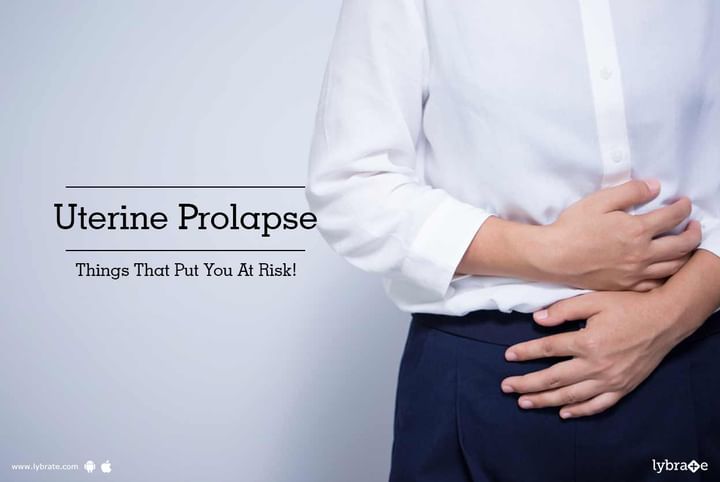Uterine Prolapse - Things That Put You At Risk!
The uterus or womb is a strong structure that is held up by the pelvic muscles and tendons. In case that these muscles or tendons extend or get distinctly powerless, they are no longer ready to support the uterus, bringing about prolapse. Uterine prolapse happens when the uterus hangs or slips from its ordinary position, into the vagina or birth channel.
Uterine prolapse might be fragmented or complex. A deficient prolapse happens when the uterus is just halfway drooping into the vagina. An entire prolapse depicts a circumstance in which the uterus falls so far down that some tissue rests outside of the vagina.
The danger of having a prolapsed uterus increases as a woman ages and her estrogen levels diminish. Estrogen is the hormone that keeps the pelvic muscles solid. Harm to pelvic muscles and tissues during pregnancy and labor may likewise lead to prolapse. Women with more than one vaginal birth and in their postmenopausal period are under the most significant risk. Any action that puts weight on the pelvic muscles can expand your danger of a uterine prolapse. Different variables that can increase your risk for the condition include:
- Obesity
- Constant coughing
- Constipation
Women who have a minor uterine prolapse might not have any side effects. Direct to serious prolapse may bring about side effects, for example:
- Having an inclination that you are sitting on a ball
- Vaginal bleeding
- Expanded discharge
- Issues with sex
- Feeling the uterus or cervix leaving the vagina
- A pulling or substantial feeling in the pelvis
- Constipation
- Bladder infections
In case that you experience these symptoms, it is important to see your specialist. Without appropriate diagnosis, the condition can weaken your vagina, bladder, and sexual capacity. Treatment is not generally fundamental for this condition. In case that prolapse is serious, talk with a specialist about which treatment choice is suitable for you. Nonsurgical medicines include:
- Shedding pounds to take the strain off of pelvic structures
- Maintaining a strategic distance from truly difficult work
- Doing Kegel works out, which are pelvic floor exercises that strengthen the vaginal muscles
- Taking estrogen substitution treatment
- Wearing a pessary, which is a device embedded into the vagina that fits under the cervix and pushes up and settles the uterus and cervix
Surgical medications include uterine suspension or hysterectomy. During uterine suspension, your specialist puts the uterus once again into its normal position by reattaching pelvic tendons or utilizing surgical materials. During a hysterectomy, your specialist expels the uterus from the body through the stomach area or the vagina. Surgery is usually successful; however, it is not suggested for women who anticipate having a baby later on.



+1.svg)
